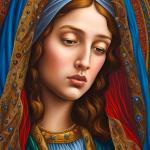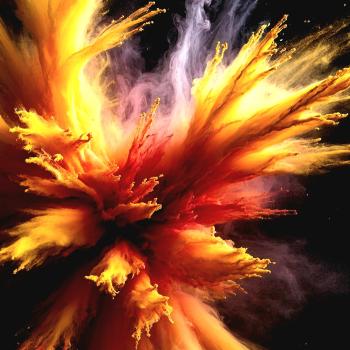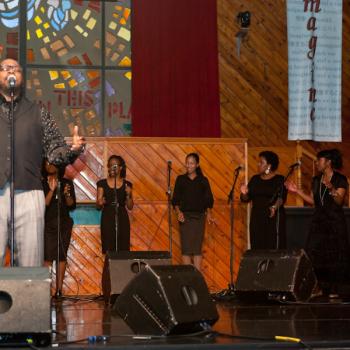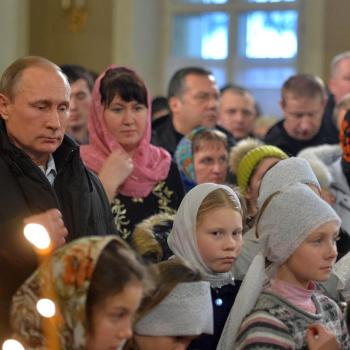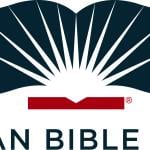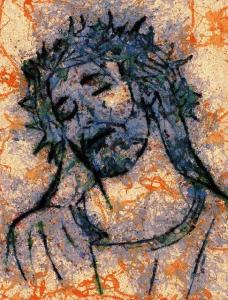
Catholics and Protestants across the globe will observe an important day this week. No, it isn’t Easter. Easter is actually the first day of next week. But later this week, millions of Christians plan to fast and pray on Good Friday (March 29).
In doing so, they will remember Christ’s death on the cross and prepare to celebrate his resurrection on Easter – the most important day in Christendom – which is March 31 this year.
But not all Christians will commemorate Good Friday and Easter this weekend. Western and eastern Christian churches use different calendars, and the Eastern Orthodox Church will observe Good Friday on May 3 and Easter on May 5.
The confusion began after early Christians decided to link Easter to the Jewish Passover, as Christ’s death and resurrection occurred at that time. Churches in the west – namely Catholics and later, Protestants – used the Gregorian calendar, while the Eastern Orthodox church chose the Julian calendar.
The Importance of Good Friday
Good Friday commemorates a significant event. But several days ago, I drove past a small church near my house and noticed that its sign said, “Christ Is Risen.” What happened to Good Friday? I wondered. Why did this church skip an important day in church history?
Maybe it’s because the rituals associated with Good Friday are “too Catholic,” and the Catholic Church isn’t Christian in some people’s minds. Or perhaps the church’s sign reflects its desire to skip the harsh realities of Good Friday in favor of Easter celebrations.
Whatever the reason, Good Friday is important, and we should remember it. Without Christ’s sacrifice on Friday, we wouldn’t have Easter on Sunday.
The Bloody Crucifixion
Mark 15 (NLT) tells the story of Christ’s crucifixion. Crucifixion was brutal. The Persians reportedly invented it between 300-400 B.C., and the Romans were using it to execute slaves, disgraced soldiers, foreigners and Christians by the time of Christ.
And it was the Romans who put Jesus to death – not the Jews.
“A short life and brutal death were enough to ensure that Jesus’ message of hope and everlasting life would spread across Judea, across the Empire and ultimately, across the world,” according to PBS.
“The message announced that there was a kingdom greater than Rome, that God would provide and that the poorest members of society would find relief and hope. It was a completely new message – one that excited his audiences.” But it angered and terrified the Roman leadership.
A clash between Christ and Rome became inevitable.
When Jesus traveled to Jerusalem for Passover in 33 A.D., he discovered that moneylenders were doing business in the temple. He became enraged by the sacrilegious behavior and wrecked the stalls before driving the moneylenders out.
Jewish religious leaders were angered by the incident, and the Romans decided Jesus was a troublemaker who posed a danger to their empire. Consequently, they arrested and crucified Christ for treason.
The Romans didn’t realize their decision would have earth-shattering consequences. “By executing Jesus, the Romans had kick-started a brand new religion that would, in time, would spread across Rome, and eventually, the world,” PBS says.
Crucifixion was a horrible way to die. I won’t describe it here, but if you’re interested in the details, read Britannica’s post on the subject.
Why “Good” Friday?
A newcomer to the Christian faith may wonder what’s “good” about Good Friday, as it recalls the terrible day when Christ died on the cross. The name would be inappropriate had the story ended there. But it didn’t. Christians are committed to the belief that Christ rose from the dead on Sunday after his execution.
The name “Good Friday” reflects the belief that Christ’s death paved the way for his resurrection. And his resurrection offers us new life.
And one final note: There is no particular way to greet a Christian on Good Friday. However, please keep in mind that “Happy Good Friday” is not appropriate.
============================================
The Good Friday Fast
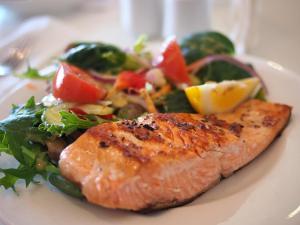
(Courtesy Pixaby / cattalin)
Catholic and Eastern Orthodox churches have a long history of fasting on Good Friday, but the practice is new for Protestant churches.
In recent years, Episcopalian, Anglican, Lutheran, Methodist, Presbyterian and some Reformed and Congregationalist churches have begun to fast and pray on Good Friday, although evangelicals do not.
“Though the rules for fasting and abstinence (during Lent) have relaxed over the centuries, Catholics still see Lent as a sacred time of self-denial, prayerful contemplation, and yes, breaded cod,” according to Slate, an online magazine that covers U.S. culture, current affairs and politics.
Protestant churches vary in how they fast and pray on Good Friday, while Catholics eat only one full meal and two smaller meals. Many people who choose to fast on Good Friday avoid eating beef, chicken, lamb, ham, venison and other meats, although they may eat fish, eggs, dairy products, fruits, grains and vegetables.
If you’re at a loss for what to prepare after weeks of meatless Friday meals during Lent, consider the following recipes for Good Friday….
Good Friday Recipes:
Salmon Patties (4-6 servings)
2 15-ounce cans salmon (drain and remove bones)
¼ cup mayonnaise
½ cup cornmeal
2 eggs
¼ cup chopped onions
Season-all
¼ cup canola or olive oil
Combine the salmon, mayonnaise, cornmeal, eggs and onions and mix. Sprinkle with seasoning and shape into 4-6 patties.
Heat the oil in a large dish at 350 degrees Fahrenheit,
Cook the patties until golden brown and thoroughly done in the middle.
Carefully move the patties to a rack or paper towel to drain.
Fried Fish (4-5 servings)
1-1/2 pound thin fish fillets
2/3 cup yellow cornmeal
1/3 cup all-purpose flour
1 tablespoon garlic
1 tablespoon salt
1 teaspoon paprika
1 teaspoon black pepper
1 cup whole milk
1 cup olive oil
Combine cornmeal and flour in a shallow bowl.
Mix spices in a separate bowl.
Add the spices to the cornmeal and flour mixture and stir.
Pour milk into a shallow bowl and dip each fish fillet into it.
Cover the fish with the cornmeal and flour mixture.
Place a large cast iron skillet over medium heat and add the olive oil to the skillet.
Fry the fish, in small batches, for 5 minutes or until each side is golden brown.
Shrimp Pasta (4-6 servings)
1 pound large deveined and peeled shrimp
½ medium onion, diced
4 cloves garlic, minced
2 tablespoons olive
4 tablespoons butter
Juice from 2 lemons
½ cup white wine
8 ounces angel hair pasta
Grated cheese to taste
Bring water for pasta to a boil.
Heat butter and olive oil in a cast iron skillet over medium heat.
Add garlic and onion to the skillet and cook until the onion is translucent (about 3 minutes).
Squeeze lemon juice into the skillet mixture.
Add wine and seasonings into the skillet.
Simmer on low heat while pasta cooks.
Follow package directions for pasta. When done, drain and add pasta to the skillet and stir.
Add seasonings to taste and serve.
Crab Cakes (6-8 servings)
1 pound crabmeat, picked
2 eggs, beaten
½ cup cracker crumbs
4 tablespoons unsalted butter
¼ cup chopped onion
3 tablespoons mayonnaise
1 tablespoon spicy mustard
A splash of Worcestershire sauce
Salt and pepper
Mix crabmeat, cracker crumbs, eggs, mayonnaise, mustard and Worcestershire sauce. Sprinkle with salt and pepper.
Heat 2 tablespoons of butter in a non-stick skillet.
Divide crabmeat mixture into 1/3-cup portions and drop ½ of the crabcakes into the hot butter.
Cook the first batch of crabcakes until golden brown (about 5 minutes), turning once.
Remove the first batch and add remaining butter to the skillet.
Cook second batch until done (about 5 minutes), turning once.
Serve immediately.
Baked Scallops (about 4 servings)
1 pound fresh packed scallops
¼ cup panko* breadcrumbs
2 cloves garlic, minced
¼ cup grated Parmesan
4 tablespoons melted butter
4 teaspoons olive oil
Juice of ½ lemon
Salt
Black pepper
(*Panko crumbs are made from crustless white bread that has been processed into flakes and dried. They are traditionally used in Japanese cooking.)
Preheat oven to 425 degrees Fahrenheit.
Pat the scallops with paper towels to dry.
Place scallops in a small baking dish and sprinkle with salt and pepper.
Combine melted butter, garlic and lemon juice and pour mixture over the scallops.
In a separate bowl, combine breadcrumbs, oil, Parmesan and a dash of pepper. Sprinkle mixture over scallops.
Place scallops in preheated oven and bake 12-15 minutes (scallops should be golden brown on top and otherwise translucent when done)
Spoon butter over scallops and serve.


